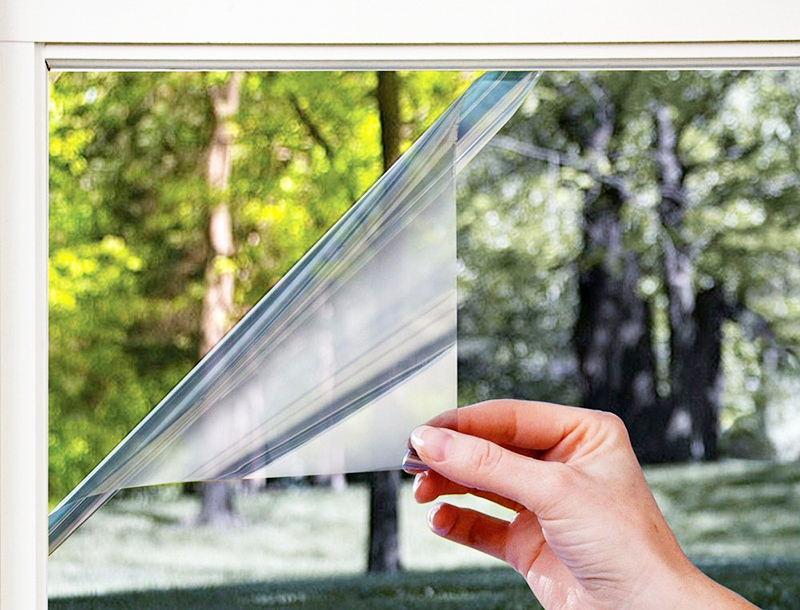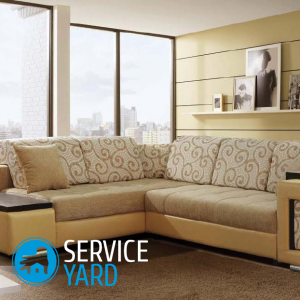
- Tools
- Choose the fabric
- Filler
- Sofa device
- Preparation of the old sofa
- Let's get to work
Agree, no matter how hard we try to keep our furniture clean and safe, sometimes we just have to face the truth and admit that withTime furniture becomes worthless. Sofas are no exception. Where we spend a lot of time with people close to us, taking guests, playing with children, I would like to see everything in an updated and working condition. A sofa is a type of furniture that is often used in everyday life, so the upholstery quickly goes out of service, and deformation of the filler itself is also possible. Have you ever spilled tea or coffee on the couch? Perhaps the children, playing, accidentally dirty, and you did not know how to fix the situation. These examples are only a small part of what can affect the appearance of the sofa. But there is a way out! In this article we will tell you how to sew a sofa with your own hands.
to the contents ↑Tools
All work starts with planning and preparation for the process itself. If you want to sew a sofa yourself, without the help of specialists, then you should perform all the actions in a certain order. This will eliminate possible errors.
Initially, you need to take care of the availability of the necessary tools and materials. So, for work you will need such tools:
- Building stapler with staples.
- Cross and flat screwdrivers.
- Construction staples.
- Knife, scissors.
- Hammer.
- Threads for furniture.
- Chalk and needle
- Drill.
- Gvozdoder.
- Screwdriver.
- Self-tapping screws.
- Adhesive PVA.
- Fabric for upholstery.
- Furniture band.
- Braid or cant.
Choose the fabric
After you have decided on the filler, it is worth paying attention to the material for the constriction of the sofa. The choice is great enough. Couching the sofa with your own hands using a cloth is a painstaking and responsible process. A quality, reliable and beautiful material is the guarantee of an excellent result at the end of the work.
For these purposes, you can use such common coatings:
- Tapestry - is a dense, noble fabric that is dust-repellent.
Important! Ideal for furniture in the interior in the style of Retro.
- Jacquard is an artificial silk that has a two-sided pattern. The material is incredibly beautiful, so it looks very expensive and solid. Pollution from this tissue is removed without much effort.
- Flock - this is a fabric that is made of a natural or artificial base. The material has a velvety in a small volume, thanks to which it is extremely nice to touch. It is able to be cleaned both dry and wet.
Important! On such a cover there are no traces left, especially if you have domestic four-legged pets.
- Velor - characterized by low pile and high strength. A big plus is that this fabric does not crumple.
- Chenille - in terms of external characteristics in many respects similar to velor, but unlike it, the material has the highest quality scale. In addition to these signs, he has the ability to breathe, as well as an easy hairiness.
- Artificial suede - a fabric according to the characteristics can be non-woven and woven. The material can be easily cleaned, easy to carry out wet cleaning with warm soapy water.
- The skin, in turn, can be both natural and artificial. The choice depends on the budget of the upholstery restoration, as well as on your own preferences. The material is quite common in the renovation of furniture and quite durable, practical in use.
Important! The downside is that the skin does not like the claws of animals.
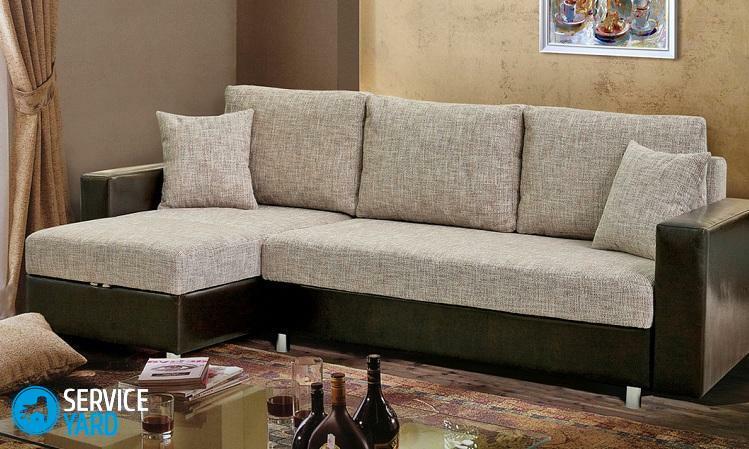
Important nuances of
Conventional fabrics, which are used for tailoring, are absolutely not suitable for such finishing works. They are not very strong and have low wear resistance.
When choosing a fabric for upholstery of an old sofa, first you need to think about the functionality of the new:
- If the sofa is designed solely to sit on it, in other words for beauty, it is worth choosing a denser and wear-resistant fabric with synthetic fibers.
- If you want to use the sofa only for sleeping, then it is better to choose such a fabric, which is based on natural fibers. This padding will allow the body to breathe, feel comfortable, which is important for the place of sleep and rest.
Important! Regardless of which material you choose, it is important to consider such requirements:
- Strength.
- Easy to clean.
- Resistance to ultraviolet radiation.
- Environmentally friendly and safe.
- Attractive appearance.
Filler
In addition to the material for the waist, the inner filler should also be selected.
Polyurethane
In the modern market of fillers, the rightful leader is polyurethane foam, which can easily be purchased at any construction store at a very affordable price.
Important! When choosing a filler, preference should be given to polyurethane foam, and not foam rubber, since it is denser, does not lose its qualities for external loads any longer.
Foam
If you are considering buying foam rubber, it is important to pay attention to such characteristics:
- The required thickness of foam rubber used for the seat and back of the sofa should be 40 millimeters thick.
- For the sidewall of the sofa you can use foam rubber 20 millimeters.
- The density of foam rubber directly depends on the element for which this filler is selected. For example, for a seat you need a higher density indicator, and for a backrest and armrests - a smaller one. For the seat is ideal foam with a density of 46 units, and for the back of the sofa - 30 units or more.
Important! It is the density of the foam that affects its life.
- Softness.
- Elasticity.
Important! Foam with a fairly low density is quickly deformed, especially on the skin of the sofa. Therefore, for this work, we recommend choosing a more dense and rigid material. But do not overdo it: too dense foam rubber will be very uncomfortable in operation.
Synthepone is a durable material, and therefore it is extremely rare, if everything is done correctly in the installation technique.
Syntepone
Synthepone will give your furniture ease and comfort. It is soft enough, but can eventually lump.
Important! A pronounced smell of chemistry can tell you about the substandard origin of this material.
to the table of contents ↑Sofa arrangement
Each couch consists of the following parts:
- Backrest.
- Seats.
- Armrests.
- The lower part of the sofa( king).
- Locks for fixing the backrest.
You need to know this in order to understand how to sew a sofa with your own hands.
to the contents ↑Preparing the old sofa
To decorate the sofa with our own hands, we:
- Completely release the wooden frame from nails, staples and completely unfit old fiberboard.
- Now you need to fix on it a sheet of plywood, pasted on top with foam rubber.
- Next, you need to carefully measure the dimensions of the seat and back, while not leaving the stock on the allowances, but not cutting off the extra centimeters.
- In order for the sofa to be extremely soft and elastic, it is necessary to lay foam in two layers: the lower one is hard and the upper one is soft.
Getting started
When we have all the necessary materials and tools, purchased and ready for work, you can go to the upholstery of the sofa. To begin with, you need to carefully disassemble the main elements.
Dismantling of furniture
Undoubtedly, before we sew the sofa, we need to disassemble the object of our furniture. This can be done with special keys.
Important! Remember about some of the nuances for yourself in this process. It is easy to disassemble, but to collect back - there can be difficulties. Therefore, such a process requires special care and attention, and therefore - do not quickly tear off the fasteners, if you can not do it the first time. Elements such as the backs and sides of the sofa are subject to disassembly in the first place.
Let's take a look at the step-by-step process of disassembling the sofa:
- Disassemble the seats.
- All fasteners must be marked and put aside in a certain place.
- If you have braces, you need to use an anti-stapler or a screwdriver.
- It is important to carefully handle the old upholstery - this is our stencil for the new one.
- If it is necessary to replace foam rubber or other material, then we do this work.
- We do an inspection of all elements of the exposed design( replacing springs, tightening the elements of the structure, gluing off the detachments).
- We fix possible defects that are clearly visible.
Whether to strictly follow this instruction or not - it's up to you. But we advise you to pay attention to this. In order to do everything correctly and not to break the components of the sofa, it is necessary to observe the following procedure:
- Remove the bolts that fix the armrests at the base.
- Remove the seats.
- Unplug the scraper.
- Lay out the sofa and turn it face up to the floor.
- Remove the backrest.
- Remove all locks.
- Remove the seats.
- Remove the old fasteners - nails and staples.
- Remove the old upholstery and filler.
- Remove the unit if broken and broken springs are present.
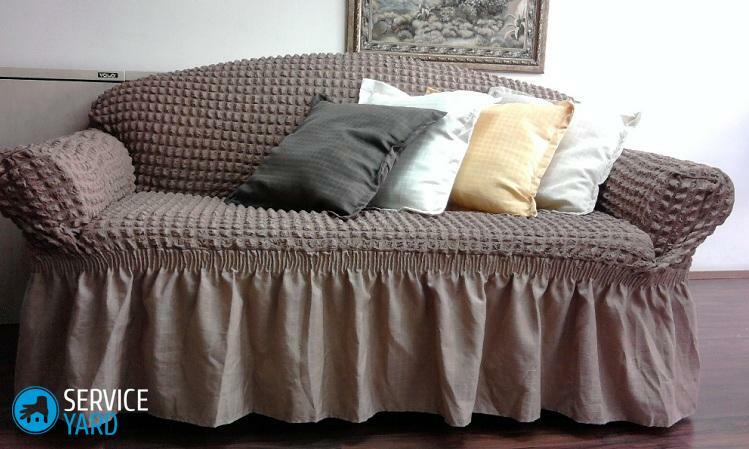
Interior repair
The main part of the process consists of several stages. In order to properly tighten the sofa, you should do everything in stages and very carefully.
It is necessary to start with the repair of the frame, i.e. the spring block:
- With the help of the pliers, carefully remove the faulty elements.
- We change the old springs to new ones.
- We put the block in its place and secure it with nails.
If there is a desire and time, it is possible to make the previous springs more elastic with the help of foam parts or from an old blanket:
- Springs must be filled with parts of cut foam. If you have chosen an old blanket, then they cover the whole surface of the block from above and make seams using a needle with twine.
- Foam is pre-glued with glue to ensure that the foam sheets are tightly laid and do not walk stilted.
It is possible to lay over the foam rubber sintepon - this will add volume.
Important! We want to note that it is not necessary to remove the sagging springs, it is enough to stretch them - they can still serve.
Sewing covers
It does not matter what you do with the upholstery of the sofa - leather or cloth. The scheme of the following actions is quite simple:
- On the floor with the wrong side up we lay out a new fabric on which we lay out the elements of the previous upholstery.
- Next, we fix all the needles so that the elements do not move from the place.
- We circle all the constituent elements with chalk, not forgetting to leave allowances for seams.
- We cut the fabric according to the intended boundaries.
- Sew all the patterns on the sewing machine.
We tighten all the elements of the sofa
So, we have everything ready, it remains only to make the upholstery of the sofa by its individual constituent elements:
- We put on our already sewn covers - back, seats and armrests.
- Those places where new elements of the sofa will be fixed, should be exactly where the old covers were located.
- With the help of a construction stapler we fix new covers.
Important! Note that the material must be tightened each time we drive the subsequent fasteners. This should be done in order to keep the material smooth and smooth, without creating an accordion effect. It is necessary to perform work on the long side, gradually moving towards the short side.
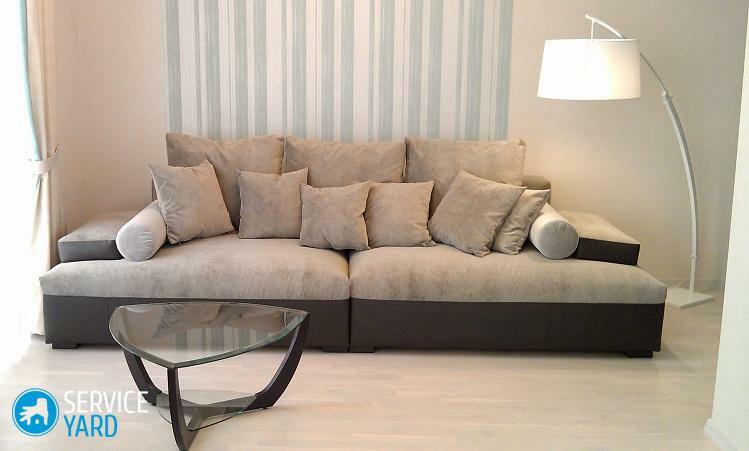
Finishing assembly
Now we only need to collect all the constituent elements in the reverse order disassembly, it is important to pay attention to:
- To coincide marks.
- The fastening of the lock itself occurs first to the backrest, and only after this - to the seat and to the king.
- First of all mount sidewalls, and then - armrests.
- At the end of the whole work, it is necessary to fasten the wooden panels, pre-lacquering them, if this is absolutely necessary.
Agree, all processes are fairly simple and require only care and accuracy. Now you know how to sew the sofa yourself with a cloth, saving on it a good amount of money.
Important! Perhaps you will be puzzled how to trim the arm of the sofa with your own hands? The answer is simple. Follow the same scheme of action that we used to tighten all the constituent elements of this design. The only nuance - on top of the surface of the armrest can be wooden inserts. If necessary, they must be replaced, fixed, for strength, varnished.
Skin tightness
If as a new material you have stopped on the skin, then it should be noted that this constriction process is somewhat different, more precisely, several important points should be considered:
- The process of sweeping is completely excluded, since the needle is able to leave holes in the skin, scratchesand cuts.
- All the cut out elements for upholstery from the wrong side are fixed only with adhesive tape.
- It is necessary to lubricate the material with petroleum jelly beforehand so as not to damage the skin when sewing itself - the sewing machine foot can leave marks.
- With allowances left for seams in the process of patterning, you also need to work. Folding them together, you can see that they can bulge out from the front side, creating ugly irregularities. Allowances for obtaining a smooth and smooth surface of the upholstery must be carefully separated and ironed through a gauze folded in several layers.
Important! The stitches will be more firmly fixed if you use braid in the process of work.
Now you know how you can replace the old upholstery with a new one without the help of specialists. It is important that this does not require a special workshop - all the processes can be done at home. No framework and obsession in how to sew a sofa. It is only necessary to purchase the necessary materials, to prepare a simple tool for the work and to start a little hard work - tightening your favorite couch. We wish you more inspiration, new achievements and realization of your plans!

